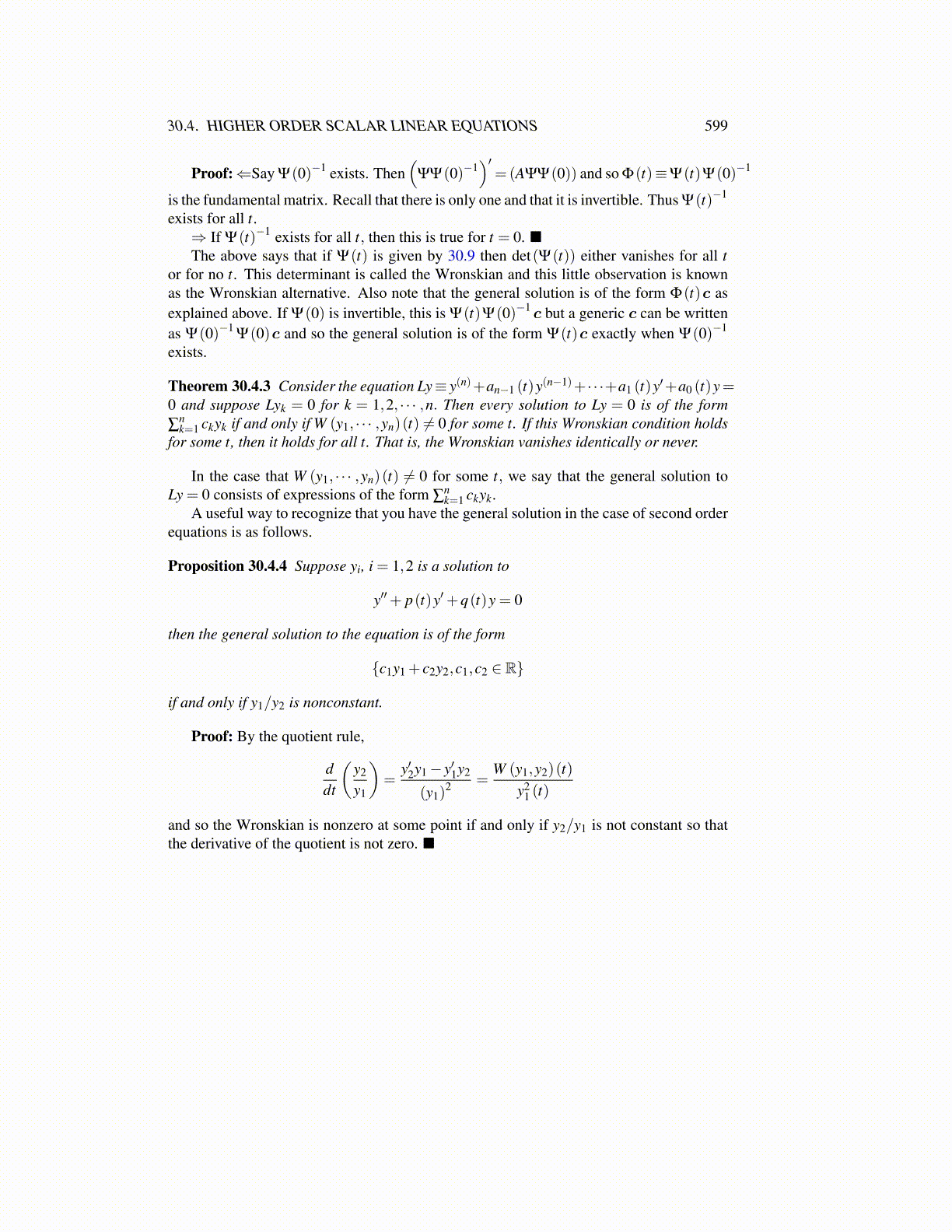
30.4. HIGHER ORDER SCALAR LINEAR EQUATIONS 599
Proof:⇐Say Ψ(0)−1 exists. Then(
ΨΨ(0)−1)′
=(AΨΨ(0)) and so Φ(t)≡Ψ(t)Ψ(0)−1
is the fundamental matrix. Recall that there is only one and that it is invertible. Thus Ψ(t)−1
exists for all t.⇒ If Ψ(t)−1 exists for all t, then this is true for t = 0. ■The above says that if Ψ(t) is given by 30.9 then det(Ψ(t)) either vanishes for all t
or for no t. This determinant is called the Wronskian and this little observation is knownas the Wronskian alternative. Also note that the general solution is of the form Φ(t)c asexplained above. If Ψ(0) is invertible, this is Ψ(t)Ψ(0)−1 c but a generic c can be writtenas Ψ(0)−1
Ψ(0)c and so the general solution is of the form Ψ(t)c exactly when Ψ(0)−1
exists.
Theorem 30.4.3 Consider the equation Ly≡ y(n)+an−1 (t)y(n−1)+· · ·+a1 (t)y′+a0 (t)y=0 and suppose Lyk = 0 for k = 1,2, · · · ,n. Then every solution to Ly = 0 is of the form∑
nk=1 ckyk if and only if W (y1, · · · ,yn)(t) ̸= 0 for some t. If this Wronskian condition holds
for some t, then it holds for all t. That is, the Wronskian vanishes identically or never.
In the case that W (y1, · · · ,yn)(t) ̸= 0 for some t, we say that the general solution toLy = 0 consists of expressions of the form ∑
nk=1 ckyk.
A useful way to recognize that you have the general solution in the case of second orderequations is as follows.
Proposition 30.4.4 Suppose yi, i = 1,2 is a solution to
y′′+ p(t)y′+q(t)y = 0
then the general solution to the equation is of the form
{c1y1 + c2y2,c1,c2 ∈ R}
if and only if y1/y2 is nonconstant.
Proof: By the quotient rule,
ddt
(y2
y1
)=
y′2y1− y′1y2
(y1)2 =
W (y1,y2)(t)y2
1 (t)
and so the Wronskian is nonzero at some point if and only if y2/y1 is not constant so thatthe derivative of the quotient is not zero. ■